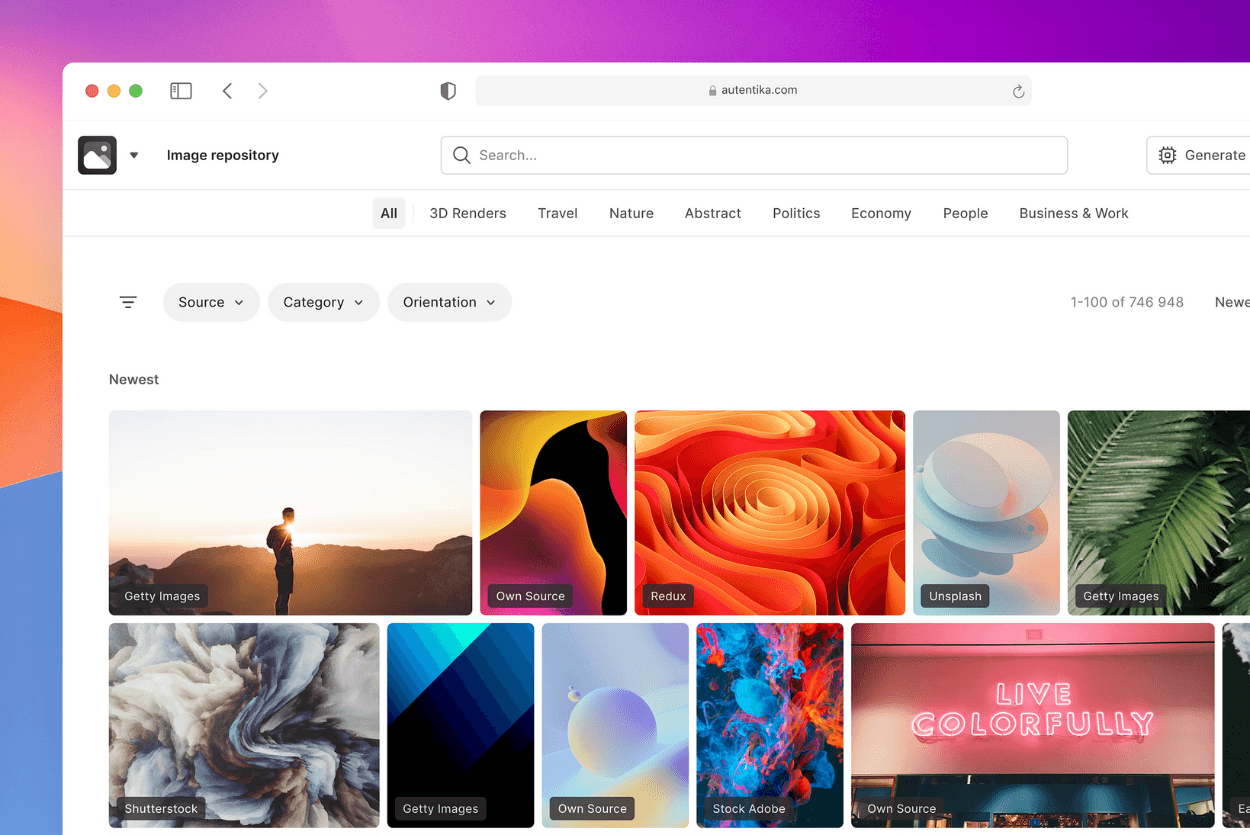Introducing AI concepts for Newsrooms
7 Sep 2023
AI can help journalists in countless ways and save them a lot of time.
AI can help journalists in countless ways and save them a lot of time. However, it's not just generative AI that proves helpful in the day-to-day work of a newsroom. Explore with us concrete use cases and proofs of concept illustrated with short animations.
Text-generating concepts
Article Generation
AI generates a paragraph based on a given topic, with the tone of voice and word count specified by the user. By providing a subheading, authors can quickly generate a background paragraph without requiring extensive drafting.
Additionally, the AI-generated paragraphs are unique every time, which adds an original tone to the article and minimises the risk of copy-pasting content.
Generating an article based on data
The concept allows journalists to input relevant data, such as stock market data, and let the AI analyse it to create a full article. Especially useful for data-based content such as weather reports, financial reports, and sports reports.
Generating an article based on tweets
This feature transforms tweets into full-length articles. The transformation process is automatic, ensuring the resulting article is coherent and well-structured. Users can also edit the article and add more details, images, and videos to make it even more engaging.
Summarising
This feature creates bullet points of simple text that can be added at the top of an article.
Paraphrasing
A rephrasing feature that helps save time avoid repetition and find alternative ways to express thoughts and ideas.
Content distribution concepts
Paragraph to bullet points and bullet points to paragraph
A feature that allows creating a bulleted list from a paragraph and vice versa.
Generating quizzes based on a given topic
A feature that generates questions and answers for quizzes based on the topic selected by an author.
Creating FAQ from paragraph
A feature that creates FAQs out of paragraph – a handy add-on to your CMS system that accompanies summarising and paraphrasing features.
Data visualisation
A feature that generates simple graphs, charts and diagrams based on the data in the article. It helps save a lot of time and spare journalists the painful process of generating charts in an external tool, where they need to input relevant data manually, create a chart, export it, and then upload it to the CMS.
With our concept, it’s enough when journalists mark selected data points they want to appear in the chart.
Generating social media graphics
A feature that automates social media asset generation. A journalist selects an article they wish to share and then choose a suitable social media channel and a visually appealing template. Next, an algorithm comes into play and automatically generates a dedicated graphic, all set and ready to be shared.
SEO-based concepts
Keyword check
A feature that provides authors with prompts on including the best keywords. Journalists can edit their text as they write, adjusting key phrases or replacing words to ensure that the content is optimised for search engines.
Topic generation based on keyword
A feature that helps authors generate multiple topics that can serve as subheadings or ideas for future articles from a single phrase.
SEO-check for image captions
Image captions are often a neglected yet important part of SEO optimisation. This feature helps authors write optimised captions and the right image description for better search results.
Fact-checking concepts
Fact-checking
Our concept of a fact-checking AI feature helps journalists deal with news verification and ensure the accuracy of facts. It analyses news content in real time and highlights mistakes and inaccuracies.
It can also help improve the integrity and credibility of publishers, and journalists get a reliable tool that reduces the time for manual fact-checking.
Fact-checking of proper names and titles
A feature that helps spot factual errors in proper names and titles, their spelling and accuracy.
Plagiarism check concepts
Plagiarism checker
A feature that can prevent plagiarism: the text is scanned and compared to the content that already exists on the web. It allows for proper source attribution and helps avoid copy-pasted content.
Plagiarism checker for titles
A feature that allows you to check whether your title is similar to the titles of your competitors and helps avoid SEO-related issues.
Photo editing concepts
Image generating
A feature that limits the number of stock pictures used and helps illustrate abstract topics. A user inputs a description and style preferences, and the AI generates images that align with the article's content.
Image sharpening
A feature that allows for image sharpening.
Image anonymisation
A feature that allows to anonymise a person in the picture and add blur to the person’s face.
Eraser tool
A feature that allows erasing an unwanted element in the picture.
Photo searching based on the sentiment
A feature that allows for advanced photo searching based on the sentiment of the picture or emotions displayed by a person in the image (face-recognition and emotion-recognition will be used in the process).
Other concepts
Headline analyser
A feature that helps analyse the headline regarding emotional sentiment, common words, character count, and SEO potential. It gives suggestions on how to improve the headline score.
News aggregation
A feature that helps in researching articles popular in search engines. Based on selected keywords, the AI shows trending articles and their sources.
Moderating comments: detecting hateful speech
A filter that helps prevent hateful speech in the comments. When a user posts a comment with inappropriate language, the AI urges them to change the wording.
Sensitive topic detection
A feature that analyses the language and detects sensitive topics. Thanks to this analysis, algorithms can suggest softening the tone of the article, adding a line about where to find help or a trigger warning.
Audio to text
A feature that revolutionises newsrooms’ workflow – thanks to speech-to-text algorithms, audio and video recordings are easily transformed into accurate, error-free text in minutes. The feature also detects speakers and highlights key moments in the recording, allowing journalists to transcribe and edit any recording without switching to external tools.
Duplicated content detection
When working in a newsroom it is sometimes easy to get lost in conversations about who is doing what, especially when it comes to stories that may interest multiple newsrooms within the same organisation.
This phenomenon, known as “news duplication” or "news overlap”, happens for various reasons. Sometimes, it is due to a lack of clear communication and sometimes to poor search functions in the CMS.
In any case, it is a waste of time to create a news story that has already been reported.
This feature immediately detects duplicate content and prevents journalists from cloning texts within the same editorial team.
Would you like to see more?
We have over 40 AI-based concepts in various stages of production. If you want to hear more about them and chat about possible implementation of AI in your newsroom, contact Slawek, our Head of Relations & Sales
-
E-mail: slawomir.wojcik@autentika.com
-
Phone: +48 603 440 039



